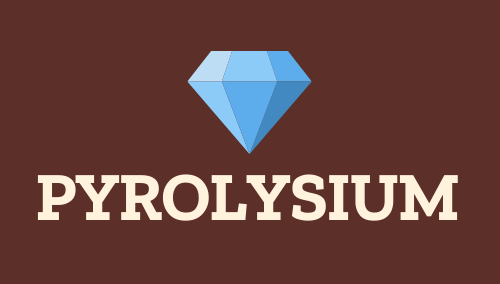Discover how affordable low-impact living can transform your community into a sustainable haven, offering both financial relief and environmental benefits. In today’s fast-paced world, many seek ways to reduce their footprint while still enjoying a high quality of life. Low-impact living, often associated with eco-friendly practices and communal spaces, presents a unique opportunity to create affordable yet meaningful communities. Whether through shared resources, minimalist lifestyles, or innovative housing solutions, the concept of affordable low-impact living is gaining traction as a viable path toward a healthier planet and a more connected society. This article delves into the intricacies of low-impact living, exploring its benefits, practical implementations, and the transformative potential it holds for your community.
Key Takeaways
– What is a Low-Impact Home? A sustainable living space designed to minimize environmental impact while maintaining comfort and functionality.
– Key Principles: Focuses on passive solar design, super insulation, natural ventilation, and low-energy appliances.
– Benefits: Reduces utility bills, lowers carbon footprint, and improves indoor air quality.
– Design Elements: Includes passive solar features, radiant heating, and rainwater harvesting systems.
– Sustainable Practices: Utilizes sustainable materials and renewable resources, plus composting toilets and waste reduction strategies.
– Lifestyle Integration: Combines efficient design with energy-saving appliances and space-maximizing layouts.
– Explore Further: Discover related movements like the Tiny House Movement and Passive Haus for more sustainable living inspiration.

What is the Low Impact Living Affordable Community?
A Low Impact Living Affordable Community (LILAC) is a cooperative housing initiative designed to promote sustainable living while ensuring affordability. At its core, LILAC focuses on creating a supportive environment where residents can live in harmony with nature and their neighbors, prioritizing eco-friendly practices and shared resources to keep costs manageable.
One notable example is the LILAC Community in West Leeds, UK. This innovative project brings together like-minded individuals who share the vision of sustainable living. The community is built on principles of mutual home ownership, where residents collectively manage the land and buildings, ensuring long-term affordability and environmental stewardship.
Key features of LILAC include:
- Mutual Home Ownership : Residents own their homes but share common areas and resources, reducing individual costs and promoting community bonds.
- Sustainable Practices : The community integrates eco-friendly technologies, such as pyrolysis systems for waste management, to minimize environmental impact.
- Affordability : By pooling resources and sharing responsibilities, LILAC members enjoy lower living costs compared to traditional housing options.
- Community-Oriented Lifestyle : Shared spaces and collaborative efforts foster a strong sense of belonging and mutual support among residents.
If you’re interested in learning more about sustainable living and how you can join a community like LILAC, visit our website for detailed information and resources.
What is Low Impact Living?
A low-impact lifestyle is a way of living that focuses on minimizing your environmental footprint. It involves making mindful choices to reduce your consumption, waste, and overall strain on the planet.
- Reducing Energy Use: Turn off lights, use energy-efficient appliances, and opt for renewable energy sources when possible.
- Sustainable Consumption: Choose products made from sustainable materials, support ethical brands, and buy locally-grown goods to reduce transportation emissions.
- Eco-Friendly Habits: Practice composting, recycle, and reduce food waste to minimize landfill contributions.
- Sustainable Transportation: Walk, bike, or take public transit to cut down on greenhouse gas emissions.
- Minimize Plastic Use: Use reusable containers, bottles, and wraps to reduce plastic waste.
- Adopt Minimalism: Focus on what you truly need, declutter, and avoid excessive consumerism.
- Volunteer: Get involved in local environmental projects or organizations to support broader sustainability goals.

How to Live Low Impact
Living a low-impact lifestyle involves making mindful choices that minimize your ecological footprint while maximizing personal satisfaction. Here’s a guide to help you get started:
1. Reduce Waste
- Practice the 3 Rs: Reduce, Reuse, Recycle.
- Choose products with minimal packaging and avoid single-use items.
- Bring your own containers for shopping and dining.
- Compost organic waste to create nutrient-rich soil.
2. Conserve Energy
- Turn off lights and electronics when not in use.
- Use energy-efficient appliances and devices.
- Opt for public transportation, cycling, or walking instead of driving.
- Install solar panels or consider renewable energy options.
3. Sustainable Consumption
- Buy locally-sourced and seasonal products to reduce transportation emissions.
- Support fair trade and ethical brands to ensure responsible production.
- Avoid fast fashion; repair clothes before replacing them.
- Ditch plastic and switch to reusable alternatives like cloth bags and water bottles.
4. Minimize Carbon Footprint
- Plant trees to absorb CO2 and combat climate change.
- Reduce meat consumption and opt for plant-based diets.
- Purchase carbon offsets for unavoidable emissions.
- Participate in community initiatives to promote sustainability.
5. Water Conservation
- Install water-saving fixtures in your home.
- Fix leaks promptly to prevent water waste.
- Limit lawn watering and use rainwater whenever possible.
- Support water conservation efforts in your community.
6. Adopt Sustainable Habits
- Cook meals at home to reduce food waste and packaging.
- Shop secondhand for clothing, furniture, and household items.
- Volunteer for clean-up drives or participate in local recycling events.
- Educate yourself and others about the importance of sustainability.
Living a low-impact lifestyle doesn’t mean sacrificing comfort or convenience—it’s about making intentional choices that benefit both you and the planet. Every small step contributes to a bigger positive change. Get started today and join the movement toward a healthier, more sustainable future.
For more resources and inspiration, visit Pyrolysium and explore our guides on sustainable living and eco-friendly technologies.

What is a Low-Impact Home?
A low-impact home is designed to minimize its environmental footprint while maintaining comfort and functionality. This approach focuses on reducing energy consumption through efficient design, passive solar techniques, and the use of sustainable materials.
Key Principles of a Low-Impact Home
- Passive Solar Design :
Orientation, windows, and shading strategies are optimized to capture sunlight during the day and retain heat at night, reducing the need for active heating systems. - Super Insulation :
High levels of insulation in walls, attic, and floors prevent heat loss and gain, significantly reducing energy demand for heating and cooling. - Natural Ventilation :
Designs incorporate passive ventilation to regulate airflow, reducing the reliance on air conditioning and mechanical systems. - Low-Energy Appliances :
Energy-efficient appliances and fixtures are selected to minimize electricity and water usage.
Benefits of a Low-Impact Home
- Lower Utility Bills : Reduced energy consumption leads to lower costs for electricity, water, and heating/cooling.
- Environmental Impact : Minimizes carbon footprint and resource depletion.
- Healthier Living Environment : Improved indoor air quality and thermal comfort.
Design and Systems
Passive Solar Features
- Strategic placement of windows and skylights.
- Thermal mass materials to store heat.
- Insulated roofs and attics to trap warmth.
Heating and Cooling
- Radiant heating systems for even distribution of heat.
- Natural cooling techniques like cross-ventilation and earth coupling.
Water Conservation
- Rainwater harvesting systems.
- Greywater recycling for landscaping.
Waste Management
- Composting toilets for waste disposal.
- Recycling and composting systems for household waste.
Lifestyle Considerations
- Appliances : Selecting Energy Star-rated appliances and avoiding unnecessary electrical devices.
- Space Planning : Maximizing space for multipurpose use to reduce the need for additional structures.
By integrating these elements, a low-impact home creates a balanced living environment that aligns with sustainable living principles. For more insights and practical tips, visit Pyrolysium and explore related resources like the Tiny House Movement and Passive Haus .
Example of a Low-Impact Style
A low-impact style in fashion refers to a simple and understated approach to clothing that prioritizes comfort and functionality over elaborate designs. This style often includes minimalistic pieces that are easy to wear and versatile for everyday use. Here are some key characteristics of a low-impact style:
- Minimalist Pieces: Clean lines, neutral colors, and simple shapes that avoid excessive embellishments.
- Comfort-Focused: Materials that are soft, breathable, and non-restrictive, ensuring ease of movement.
- Versatility: Outfits that can transition smoothly from day to night or season to season without major changes.
- Timeless Appeal: Designs that remain fashionable over time without following fleeting trends.
Examples of low-impact styles include: – A classic white tee paired with dark wash jeans and a lightweight jacket. – A flowy midi dress made from organic cotton, perfect for warm weather. – A tailored blazer worn over a simple graphic tee for a polished yet low-maintenance look.
This style emphasizes practicality and longevity, making it ideal for those who value comfort and durability in their wardrobe choices.

Understanding a Low Offer on a Home
A “low offer” on a home refers to an offer that is significantly below the asking price, typically ranging between 10% to 20% or more. However, the exact threshold for what constitutes a low offer can vary depending on several factors:
- Market Conditions: In a competitive housing market, sellers may expect offers closer to the asking price. Conversely, in a slower market, a larger discount might be acceptable.
- Seller Motivation: Sellers who are eager to sell or have financial pressures may accept offers below the asking price. Those with no urgency may hold out for a higher price.
- Property Condition: Properties needing renovations or updates may attract offers lower than the asking price, as buyers anticipate negotiating repair costs or discounts.
- Buyer Flexibility: Buyers who are willing to close quickly or make concessions may be able to secure a lower price, as sellers may prefer a faster transaction.
- Agent Influence: Experienced agents often know the market well and can advise buyers on what constitutes a reasonable offer, helping to strike a balance between a low offer and a fair price.
Additionally, the concept of a “low offer” isn’t static. Many offers are subject to negotiation, with buyers and sellers often reaching agreements that adjust the purchase price based on terms like closing dates or contingencies. Therefore, while an initial offer may seem low, it can ultimately lead to a price that is closer to the original asking price after discussions.
For buyers, understanding these dynamics is crucial. Working closely with a knowledgeable real estate agent can help navigate the complexities of making an offer that is both competitive and reflective of the market’s current conditions.




0 Comments